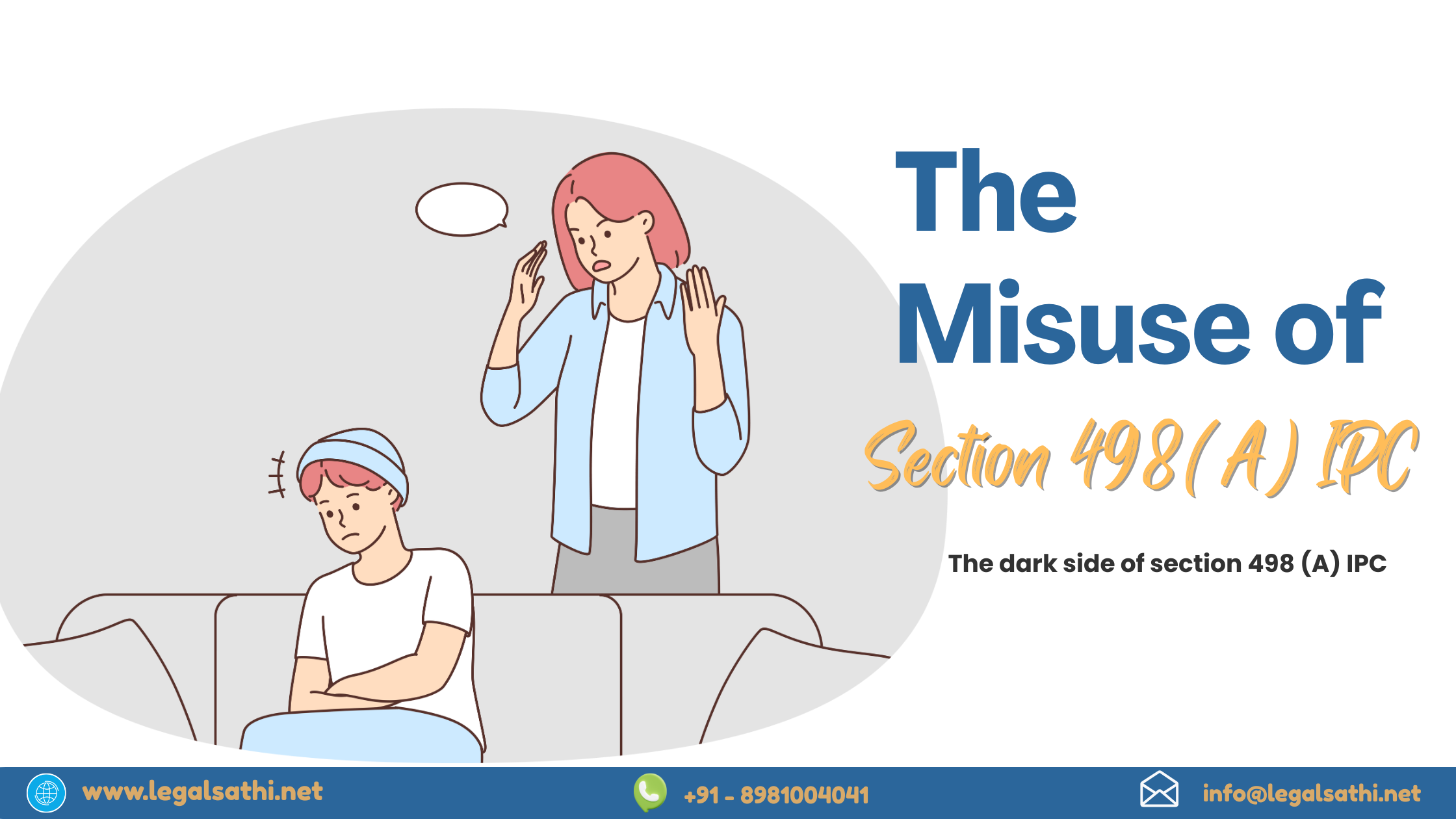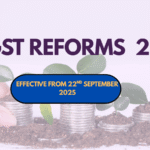Good Law, Bad Intentions: Understanding the Misuse of Section 498 A
Section 498A of the Indian Penal Code is a legal provision aimed at protecting married women from cruelty or domestic violence by their husbands or in-laws. Introduced in 1983, it was a significant step towards dowry-related harassment and other forms of domestic abuse. From real-life case studies to legal insights, this blog explores the downside or misuse of the act.
How a Law Made to Protect, is Being Exploited — and Why It Matters
Irrespective of the Supreme Court seeking aid from Bhartiye Naya Sanhita to prevent the misuse of Section 498A, it is continued. The Supreme Court had taken multiple precautionary steps including the dismissal of a criminal case filed against a husband by the wife under the act. It had also highlighted the legislature’s ignorance of the recommendations during Preeti Gupta vs the state of Jharkhand Criminal Law journal (4303 Case) in 2010. However, these faults have led to the misuse of the provision, leading to an increase in false accusations or exaggerated complaints by the wives, to fulfil their agenda. These instances do not just harm the dignity of the law, but also take away from the seriousness and trustworthiness of the genuine sufferers. Yet, various Courts have identified the misuse and tried to call for necessary steps to prevent it, while offering protection to the victims.
Misuse in Motion: Real Cases, Real Damage
Several cases have demonstrated the misuse of Section 498A IPC. The case which initiated the conversations about the possibility of the misuse of 498A IPC, took place, as early as 2005, with the Sushil Sharma v. Union of India. It is a landmark case highlighting the misuse of legal provisions where the accused was convicted in a sensational dowry death case. It shed light upon the gravity of domestic violence laws. It sparked debates around the necessity of having a balanced approach towards Section 498 A. Then came the Rajesh Sharma and Ors. V. State of UP Anr. This led to SC’s decisions to incorporate methodologies such as assigning investigating officers and exploring the possibilities of settlement between the parties, to prevent the misuse of Section 498 A. The Supreme Court laid down safeguards to prevent misuse of Section 498A, including the formation of Family Welfare Committees to vet complaints before arrest.
Furthermore, the Case of Arnesh Kumar v. State of Bihar in 2014, heightened the issues regarding the power of the police to arrest individuals without proper investigation. The Court henceforth, ruled out automatic arrests. This mandated the need for a proper investigation before the arrest under Section 498 A; thereby avoiding unnecessary harassment. However, the landmark case took place in 2010 with Preeti Gupta and Anr v. State of Jharkhand. It exposed the frivolous complaints and the abuse of Section 498A, to the Supreme Court. The judgment emphasised the growing misuse of Section 498A and called for a serious review of its application to prevent unjust harassment.
From Justice to Manipulation — How People Are Exploiting the Law
lives, may also be used to libel and harass individuals if not properly amended.
Several cases bring out the need for substantial allegations of domestic abuse and dowry demands. And although, the Court has also taken necessary steps to ensure justice, there should be scope for amendments to penalise the abusers of the law. It could allow scope for filing a case of defamation against the individuals who misuse Section 498 A through incompetent allegations against their partners.
Facing false accusations or misuse of the law? LegalSathi & Co offers clear, strategic legal solutions to safeguard your interests. Learn how we can help.
Caught Off Guard: Can the Law Keep Up With Its Abusers?
The Supreme Court, however, has not been oblivious to the misuse of Section 498 A ipc. On May 13th, 2025, the Supreme Court acquitted a convict, who was charged under 498 A and the Dowry Act; simultaneously highlighting the wife’s FIR being lodged on false grounds. Cases of misuse of the act appear as recent as June 6th, which enhances the need for strong evidence.
While the misuse will only lead to the strengthening of laws, it does take away from genuine concerns. The law that was made to support women, has since undergone a series of amendments leading up to putting weightage on gender-neutral and strong evidence-based proceedings. Furthermore, the lawyers and police officers working closely with the section 498 A IPC, have undergone revaluation to be able to serve justice to the genuine victims and prevent misuse.
Legal Recognition, Challenges, and the System’s Struggle to Respond
The impact of the misuse of section 498 A has not just been the arrest and harassment of innocent individuals, but it has also led to the delaying of genuine cases. Due to the implementation of lengthy procedures to ensure justice, the genuine cases would be delayed and the families would be destroyed.
Other than the legal impact and stricter norms, the damage to reputation and mental health is irrevocable unless proven innocent, due to the hefty charges. The delay would affect the mental health of sufferers while the false accusations can affect the innocents.
Reclaiming the Law: Curbing Abuse Without Silencing Justice
The legitimacy of protective laws is silently threatened by the increasing abuse of Section 498A. The laudable goal of introducing Section 498A was to protect women from abuse and cruelty. When laws intended for protection turn become instruments of retaliation, justice becomes meaningless. Applying blindly without question only serves to widen societal gaps. False charges strain the court system and lessen the gravity of real situations. To guarantee justice for all parties, these issues must be addressed.
Solutions, Safeguards, and the Way Forward
For the legislation to empower victims, and not invent new ones, the initial phase of investigation ought to be strengthened while providing guidance. Digital evidence can enhance the case while penalties for false complaints can stop the increasing numbers of cases under section 498 A and quicken the pace of justice for the sufferers. Fast-track courts can play a significant role in these types of cases.
Concerned about legal misuse? Let LegalSathi & Co guide you with expert advice and trusted legal support. Contact us today to protect your rights the right way.







